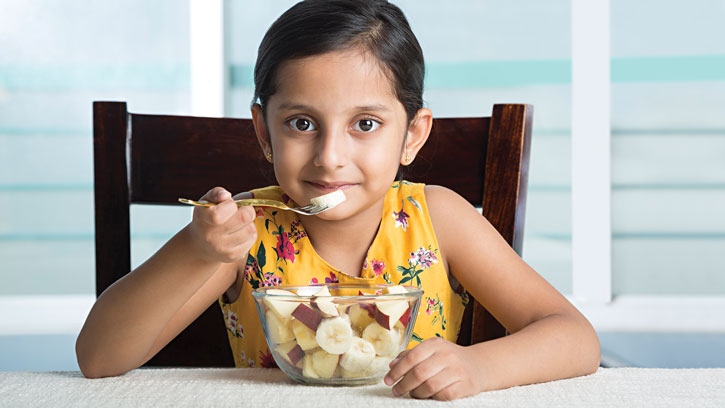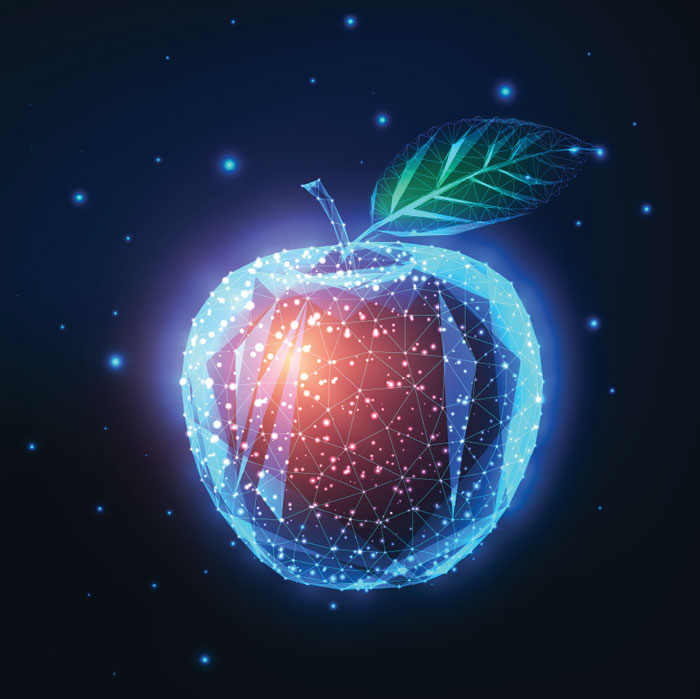Action game improves kids’ food choices; Five technologies driving food and agriculture
NEWS
Action game improves kids’ food choices
A mobile action game based on implicit learning significantly improved food choices among 10- and 11-year-olds, concluded a study conducted by researchers at Carnegie Mellon Univer-sity, Hofstra University, Johns Hopkins University Center for Communication Programs (CCP), and several international organizations.
In the game, an avatar fights robots that represent unhealthy foods, with the avatar’s speed and body shape changing in response to the food it eats. While most video games for children use explicit education strategies, including feedback, instructions, answers, or suggestions, the study game relied on neurocognitive training and immersive technology to teach participants to make healthier food choices.
The study was conducted with 104 children from three schools in Chennai, India. Each child was randomly assigned to either the action game group or a control group that played a board game without a dietary education feature. After playing the games for 20 minutes, the children were asked to choose two items to eat among three pairs of healthy and unhealthy foods.
Children who played the action game were more likely to choose healthy foods immediately after playing the game. Choices were not influenced by how many levels of the game the children played; however, reading more facts about healthy foods was associated with healthier choices, while reading more facts about unhealthy foods was associated with more unhealthy choices.
Uttara Bharath Kumar, technical advisor for social and behavior change at CCP, believes the study findings can influence communication strategies aimed at teaching children about healthy food choices. “It is consistent with what we know from behavioral science that fear and negative communication do not work as well as positive messaging and promoting self-efficacy—the notion that ‘you can do it!’,” he said in a press release.
Educating parents about package labels
Ambiguous information on infant and toddler food package labels can make it difficult for parents to understand the nutritional value of the foods they feed to their young children, according to a study published in the Journal of Nutrition Education and Behavior.
In a comparison of products for infants and toddlers, researchers looked at aspects of vegetables and fruits on ingredient lists, reviewing, for example, whether the ingredient was a puree or a powder, and where it was listed among other ingredients. Commerical infant and toddler food packages did not convey information in a consistent way, the researchers found.
Better nutrition in infancy is one of the keys to improving children’s lifelong health, and the researchers hope their work will help nutrition educators note differences between the ingredients list and the front label of the package, so parents can better navigate the infant and toddler food product market.
“We want the front of the package—where those vegetables might be listed—to accurately represent the primary ingredients, and even the flavor, of the product. We want to promote more transparency so parents and caregivers can buy the food they want their children to learn to eat at the family table. Let’s make it easier for them to do that,” said Susan L. Johnson, Department of Pediatrics, Section of Nutrition, University of Colorado Anschutz Medical Campus, in a press release.
Five technologies driving food and ag
Technological advancements are reshaping the world, and when it comes to food and agriculture, five key innovations are driving change, according to a report from Lux Research that highlights the following developments as shapers of the 2021 landscape:
Bioinformatics. Having developed and risen to prominence in medical and pharma applications, bioinformatics is now crossing over into agrifood and health.
Alternative Proteins. Concerns about health and sustainability are pushing diets away from meat and fish, leading to changes ranging from land use to ingredient supply chains.
Precision Agriculture. Digital tools are revolutionizing agriculture, improving product yield and quality, and reducing environmental impact.
Biofertilizers. Biofertilizers and other microbial biostimulants are using living microorganisms to improve nutrient use efficiency and agriculture sustainability.
Ingredient Informatics. Applying machine learning to recipes and ingredients can produce new product formulations more quickly, rapidly accelerating new food product launches.
“Agriculture and food companies alike will need to capitalize on the digital revolution, with ingredient informatics as a prime focus for shortening product development cycles and precision agriculture technologies as unfamiliar-but-critical complements to conventional agrichemical developments,” said Joshua Haslun, senior analyst at Lux Research, in a press release.
“Alternatives to mainstay ingredients are another hallmark of both agriculture and food, where biofertilizers and alternative proteins, respectively, loom large,” he continued. “Finally, look for bioinformatics to come out of its early role in pharmaceutical development to take a prominent, transformative position across the agrifood ecosystem.”
Profile of the plant-based consumer
Although plant-based foods dominate the diets of vegans, vegetarians, and pescatarians, omnivores and flexitarians comprise the lion’s share of consumers who eat the products, a new report from Packaged Facts concludes.
“Although plant-based meat and dairy alternatives do appeal to some vegans and vegetarians, they are more targeted toward the preferences of omnivores and the more plant-focused flexitarians who are most open to replacing animal products in their diet with other foods,” said Jennifer Mapes-Christ, food and beverage publisher for Packaged Facts, in a press release. “Vegans and vegetarians make up just a small portion of the population, while omnivores and flexitarians combined account for the vast majority. Thus, these large groups represent a larger potential market for plant-based meat and dairy alternatives than the vegans and vegetarians these products were first developed for decades ago.”
Packaged Facts survey data indicates that plant protein is considered healthy by 69% of U.S. consumers, while only 42% believe animal protein is healthy.
The report also noted that individuals who are newly converted to veganism or vegetarianism may find alternatives pleasing if they miss the taste or texture of meat or dairy. By contrast, experienced vegans and vegetarians may not miss meat or dairy products if they have adapted their diet around plant-based foods that look and taste like plants. In addition, vegans and vegetarians who have chosen their diet for health reasons may be uninterested in products that attempt to replicate meat or dairy characteristics if the products are highly processed or contain ingredients with an unhealthy perception, such as preservatives, soy, or gluten.
Embellishing food with edible holograms
Researchers reporting in ACS Nano have developed a laser-based method to print nanostructured holograms on dried corn syrup films. The edible holograms could also be used to ensure food safety, label a product, or indicate sugar content.
Researchers Bader AlQattan, Haider Butt, and colleagues sought to develop a safe, fast, and versatile way to pattern edible holograms onto a variety of foods. They started with a solution of corn syrup, vanilla, and water that is dried into a thin film, then added a fine layer of nontoxic black dye. Using direct laser interference patterning, they etched off most of the dye, leaving raised, nanoscale lines that formed a diffraction grating. When struck by light, the nanostructure diffracted the light into a rainbow pattern, with different colors appearing at different angles of viewing. The intensity and range of colors were controlled by varying the spacing between lines in the grating or sugar content of the corn syrup film.
The next step for the researchers will be to adapt the method to a food-grade dye that could replace the synthetic black dye used in the pilot experiments.






